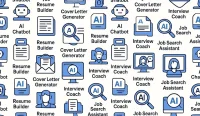Introduction
Australia is facing a critical juncture in its labor market. With unemployment rates stubbornly high and education standards under scrutiny, the nation is grappling with a crisis that could reshape the future of work. This article delves into the multifaceted nature of Australia unemployment crisis, the hidden impacts on job seekers and employers, and how evolving education standards are influencing the job market. We’ll also explore actionable strategies for job seekers and employers navigating this challenging landscape.
Understanding the Unemployment Crisis
Australia’s unemployment crisis is not just about the headline jobless rate. Recent data reveals that 53% of jobseekers are now on benefits for over two years, highlighting a growing cohort of long-term unemployed. This trend signals deep-rooted structural issues, including skills mismatches, regional disparities, and a lack of effective pathways back into employment. The persistence of long-term unemployment has far-reaching consequences for individuals, families, and the broader economy.
The Hidden Impact on Australian Jobs
Beyond the statistics, the unemployment crisis is quietly reshaping the Australian workforce. Many jobseekers face barriers such as outdated skills, limited access to retraining, and discrimination based on age or background. The rise in long-term unemployment also places additional strain on social services and public finances, fueling debates about the sustainability of welfare programs and the need for targeted interventions.
How the Unemployment Crisis Will Create New Job Opportunities
While the crisis presents significant challenges, it is also catalyzing new opportunities. Workforce development programs are expanding, offering reskilling and upskilling pathways in sectors with labor shortages. The demand for healthcare workers, digital professionals, and tradespeople is rising, creating avenues for jobseekers willing to adapt. Employers are increasingly open to hiring candidates from non-traditional backgrounds, recognizing the value of diverse experiences and perspectives.
Industries Most Affected by the Unemployment Crisis
Some industries have been hit harder than others. Manufacturing and retail continue to shed jobs due to automation and global competition. Meanwhile, the public service sector faces its own controversies, with pay disputes and hiring freezes impacting job security. On the other hand, sectors like healthcare, technology, and renewable energy are experiencing growth, driven by demographic shifts and policy priorities.
The Education Standards Crisis and Job Market Implications
Australia’s education system is under intense scrutiny. The recent move to allow D-grade pass marks has sparked a national debate about declining standards and their impact on workforce readiness. Critics argue that lowering the bar undermines the value of qualifications and leaves graduates ill-prepared for the demands of modern jobs. Employers are increasingly calling for reforms to ensure that education outcomes align with labor market needs, emphasizing practical skills and critical thinking over rote learning.
Looking to Hire Fast?
If you’re an employer seeking to fill roles quickly in this challenging environment, WhatJobs can help. Connect with qualified candidates and access tailored recruitment solutions today.
Post a Job Now →What This Means for Your Job Search Strategy
Jobseekers must adapt their strategies to succeed in the current market. This means embracing lifelong learning, seeking out reskilling opportunities, and being open to roles in emerging industries. Networking, both online and offline, remains crucial. Tailoring applications to highlight transferable skills and a willingness to learn can set candidates apart in a competitive landscape.
Geographic Considerations for Job Seekers
Location matters more than ever. Regional areas often face higher unemployment rates and fewer job opportunities, but some are benefiting from targeted government investment and industry growth. Jobseekers should research local labor market trends and consider relocation or remote work options to expand their prospects.
The Rise of Workforce Development Programs
Government and private sector initiatives are ramping up to address the skills gap. Workforce development programs offer training, apprenticeships, and job placement services tailored to high-demand sectors. These programs are critical for helping long-term unemployed individuals re-enter the workforce and for supporting economic recovery.
Long-term Career Planning in the Unemployment Crisis
In an uncertain job market, long-term career planning is essential. Jobseekers should focus on building adaptable skill sets, pursuing credentials in growth industries, and setting realistic goals. Career counseling and mentorship can provide valuable guidance and support during periods of transition.
The Psychological Impact of Long-term Unemployment
Long-term unemployment takes a significant toll on mental health and well-being. Feelings of isolation, loss of confidence, and anxiety about the future are common. It’s important for jobseekers to seek support, maintain routines, and engage in activities that foster resilience. Community organizations and mental health services can offer assistance during difficult times.
Conclusion: Navigating the Unemployment Crisis Job Market
Australia’s unemployment crisis is complex and evolving. By understanding the underlying causes, embracing new opportunities, and advocating for higher education standards, both jobseekers and employers can navigate the challenges ahead. Proactive strategies, continuous learning, and community support will be key to building a more resilient and inclusive job market.
Frequently Asked Questions
Q: What is the current long-term unemployment rate in Australia?
A: Over half (53%) of jobseekers are now on benefits for more than two years, highlighting the scale of the long-term unemployment challenge.
Q: How are education standards affecting the job market?
A: The introduction of D-grade pass marks has raised concerns about declining education standards and their impact on workforce readiness.
Q: What industries are hiring despite the crisis?
A: Healthcare, technology, and renewable energy sectors are experiencing growth and actively seeking new talent.
Q: What support is available for long-term unemployed jobseekers?
A: Workforce development programs, government initiatives, and community organizations offer training, job placement, and mental health support.
Sarah’s Career Transformation
Sarah, a 38-year-old administrative assistant, lost her job during the economic downturn. After spending over two years on benefits, she enrolled in a workforce development program focused on digital skills. With new certifications in hand, Sarah secured a role in a tech startup, illustrating how targeted training and perseverance can lead to successful career transitions even in a challenging job market.




